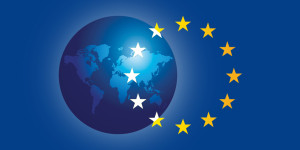What can communities do for themselves and how can they maintain basic functions and structures during a disaster and then recover after the event is the focus of the workshop on Communities Resilience During and After Disasters organised by the EU-funded PPRD South Programme in Madrid from 12 to 15 September 2011.
More than 40 experts working in the National Civil Protection Authorities, International Organizations and NGOs in 13 Mediterranean and Balkan Programme Partner Countries will gather in Spain for this four-day workshop which will be opened by Mrs María Victoria Eugenia Sanchez Director of the Spanish Civil Protection together with Mr Francisco Fonseca Morillo, Head of European Commission representation in Spain. Mrs Olga Slagalo and Mr Almir Beridan from the Protection and Rescue Sector of the Ministry of Security, and Mr Emsad Dizdarevic from the Centre for Security Studies (CSS) will represent Bosnia and Herzegovina at the meeting.
The aim of the workshop is to introduce and discuss about a new approach to cope with disaster risk based on the concept of community resilience. In general terms, resilience means being able to absorb stress or destructive forces through resistance or adaptation. Like for example, the Egyptian pro-democracy protesters who recently continued to defy the curfew, rallying in Tahrir Square and helping each other with food, security and medical assistance, were declared by Al Jazeera TV as „remaining resilient”.
With reference to disastrous events, community resilience is the capacity of groups of people living in the same area and sharing the same risks to resist, absorb, and recover from the effects of a hazard in a timely and efficient manner. Taking a second example, the Japanese and Californian cities are considered more earthquake resilient than Haitian or Italian cities as they reported few damages and victims following very strong earthquakes due to, among others, enforced effective risk compliant building regulations, efficient emergency management plans and resistant critical infrastructures.
During the four-day PPRD South workshop, participants will review and analyse the different aspects of resilience that can enhance community’s ability to respond and recover from disasters, mostly by means of its own resources.
But how can a community become resilient? The lesson to be learned is: establishing mechanisms for community participation to decision making; carrying out community risk assessment to provide a comprehensive picture of all major hazards and risks facing the community and preparing consistent community disaster plans; helping the population to better understand risks through education, public awareness, and information sharing; establishing consistent risk management and vulnerability reduction policies covering, for example, environmental and land use management, health, social protection and sustainable livelihoods; and setting up civil protection volunteers’ networks that can help in preparing and implementing emergency plans.
The global economic losses due to natural catastrophes and man-made disasters during the year 2010 overcome 170 billion euro, more than triple the 50 billion euro lost in 2009, according to a study by the reinsurance company Swiss Re. Around 304,000 people died in such catastrophes in 2010, making it the deadliest year since 1976. Some of the worst disasters occurred in developing countries, such as the January 2010 earthquake in Haiti which left an estimated 222,570 people dead. There, resilience and sustainable development issues were not adequately taken into account.
Contact: Alessandro Candeloro, +39 349 0850931, info@euromedcp.eu

